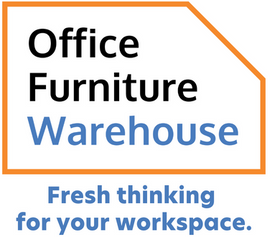We’ve heard the term ergonomic a lot, but what makes something ergonomic versus not ergonomic?
The word ergonomics comes from the Greek ergon (work) and nόmos (law) and is a discipline that studies the interactions between human activity and the components of this activity (tasks, tools, methods, work environment, etc.) to develop systems that allow people to work in conditions of optimal efficiency, safety and comfort.
Ergonomics involves designing the workplace to fit the needs of the worker rather than trying to make the worker adjust to the workplace, and good ergonomic design has been shown to increase work quality and production as well as worker well-being.
So when it comes to chairs, we know that ergonomic chairs are essential for any office, but it can be difficult to navigate the sea of options out there. The key is knowing which elements are necessary in order to create a comfortable and supportive workspace.
Let's break down what makes a chair ergonomic, so you know what to look out for!
Seat Height Adjustment
One of the most important features of an ergonomic chair is adjustable seat height. Seat height should be adjustable so that it can accommodate users of different heights as well as changes in posture throughout the day. An ideal range for seat height is 17”-21” or 43 -53 cm from the floor to the top of the seat cushion. It’s also important to make sure the feet are flat on the floor when seated with a 90-degree angle at both hips and knees.
Backrest
The backrest should provide lumbar support, which helps reduce tension in the lower back muscles and promote better posture. An ergonomically designed chair will have an adjustable backrest that moves both up and down, as well as forward and backward, allowing you to customize your fit to your own body type. Additionally, it should include tilt or recline capabilities that allow you to lean back without having to move too far away from your desk or work surface.
Armrests
Armrests are essential because they help keep your arms in a neutral position while working at a computer or typing on a keyboard. Armrests should be adjustable in both width and height so that they fit comfortably into your body type and can be moved out of the way when not in use. Aim for armrests with soft padding and enough contours that they fit comfortably against your arms when resting but do not cause pressure points when typing or using a mouse.
An ergonomic chair should provide comfort, support, and flexibility while you work—no matter how long you sit. By considering each element—from seat height adjustment to armrest design—you can find one that best fits your needs and create an office environment that lets you focus on being productive instead of dealing with aches or pains by the end of the day.
With these key elements in mind, finding an ergonomic chair has never been easier! Office Furniture Warehouse is a specialist in ergonomic office furniture. Our aim is to get you working comfortably and productively, and what better time than a brand new year - so what are you waiting for? Check out our range of ergonomic chairs today and find your ideal chair!


